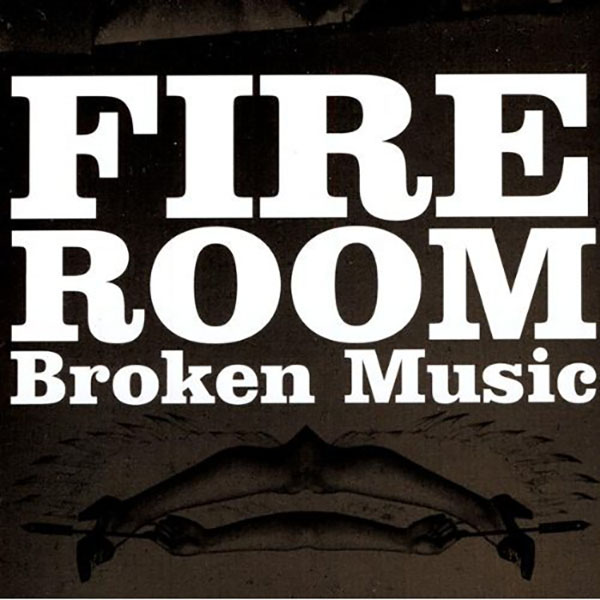
by Tim Owen
June 16, 2009
/ ALBUM
The full cathartic embrace of noise
It’s surprising that so few jazz musicians have squared off against the new dynamics arising from the DIY electronica and Noise scenes. Sure, professor Braxton temporarily took up the gauntlet, sharing a Victoriaville stage with Michigan’s Wolf Eyes back in 2005, but otherwise, aside from the odd deployment of FX by the likes of Toshinori Kondo, and the electroacoustic explorations of Lawrence Casserley and Evan Parker, it seems this is one hinterland across which few Jazz artists care to tread. Step forward Ken Vandermark (tenor and baritone sax) and Paal Nilssen-Love (drums), recording here with Noise pioneer Lasse Marhaug (electronics).
I’ll assume Vandermark and Nilssen-Love are known entities. If Marhaug’s name isn’t familiar then perhaps you’ve come across Jazkamer or Testicle Hazard, just two of the many projects with which he is linked. While Jazkamer do circle Jazz from a distance (though what Mr Marsalis would make of their Metal Machine Music is surely a given) Testicle Hazard rejoice in the label of ?harsh noise’, and that’s Marhaug’s mode here. That shouldn’t obscure the care with which his contributions are made. A jazz musician he may not be, but he comes to this project ears open, seeking to contribute not to obliterate. It could be that the three-way show of consideration and restraint ultimately keeps this music earthbound, but then Fire Room never seek the transcendent, preferring to play in the musical dirt, growing something protean from their substitute bonemeal and phosphates of reed, skin, metals and electricity.
Broken Music 1 goes for broke, with Marhaug laying down a sheet of overdriven electric guitar-style fuzz, into which Nilssen-Love’s drums punch a martial, machine gun staccato. Vandermark initially joins the attack with blaring powerhouse saxophony, but accompanies a general shift in register with some R&B riffing as stridency gives way to unease, the rhythm fractures, and the electronics break down to interference. From this point it’s clear that this is no Noise project but rather an exploration of the murky territories between scenes.
Slag is contrastingly spacious, from its beginnings in rustlings and rattlings via a watery, ethereal passage to a sudden, wrenching halt as if the plug was simply pulled on the recording. It restarts with tentative sax and cymbal percussion, and moves on to a final section with Vandermark sounding strained over low-key but grating electronics.
On “When Water Burns Air” Marhaug evokes just that sound as Vandermark and Nilssen-Love duel aggressively, only for the initial free-jazz workout to become increasingly aimless, perhaps soaking up the fragile unease of Marhaug’s ongoing, barely audible contribution. Until Vandermark enters at 04:11, “Hand Lettered” is all amped-up microsound, a mild stream of static and sporadic metal percussion. Then plaintive saxophone motifs agitate the electronics and metallic scrabbling into a tense electronic storm, until finally circuits appear to short and again the sound goes dead, this time terminally.
Vandermark takes a straightforward solo on Dashboard Fire, with Nilssen-Love sounding agitated in support and only gradually taking the initiative to open out. Marhaug stealthily introduces a harsh but entirely appropriate skein of noise which he proceeds to manipulate with real sensitivity to the ebb and flow of the the others’ interactions. With its skilful blending of subtlety and intensity, this would be the track to download for a taste of the whole.
Line of Lead deploys some electronics that presumably originate from samples, with vinyl scratching and guitar clearly recognizable (the electronics otherwise are purely textural). Nilssen-Love is skittish and the whole thing sounds playful given what’s gone before. Vandermark plays the track out with a genuinely lovely coda.
Broken Music 2 starts by evoking an idling steam engine. Vandermark interjects brusque quacks and rapid trilling. It takes Nilssen-Love, making his limited opportunities to introduce rhythm count, to draw out the saxophonist’s eloquence. Vandermark digs deep and finds a riff but the track never settles, despite gathering momentum. Momentarily it fizzles out as Marhaug takes over by stealth, but Vandermark and Nilssen-Love come bullying back in for an exhilaratingly muscular passage of pure free jazz. Marhaug hangs in, filling the silences with low-grade static before entering the melee for a last, late hint at other possibilities for this unit in the full, cathartic embrace of noise. Bring it on!
blog comments powered by Disqus